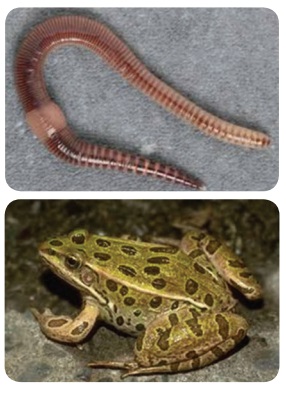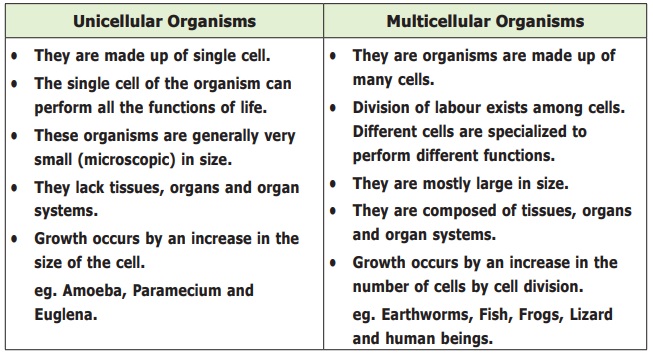Living World of Animals | Term 1 Unit 5 | 6th Science - Unicellular and Multicellular Organisms | 6th Science : Term 1 Unit 5 : Living World of Animals
Chapter: 6th Science : Term 1 Unit 5 : Living World of Animals
Unicellular and Multicellular Organisms
Unicellular and Multicellular Organisms
Living things are
made of small units called cells. All the functions and processes in the body
of living things are brought about with the help of these microscopic cells.
Some organisms are
made up of a single cell and these are called unicellular organisms,
whereas, the organisms that are made of many cells are called multicellular
organisms.
Amoeba, Paramecium
and Euglena are unicellular while, fish, frog, lizard, bird and man are
multicellular.
Unicellular organism
Unicellular
organisms are small, usually microscopic, cannot be seen with naked eye. They
are aquatic, simplest and most primitive of all animals. They perform all their
physiological activities by the special structures present inside the body
called organelles.
We know Amoeba is
an unicellular organism It does all the activities like digestion, locomotion,
respiration and reproduction.
It swallows food
from the water and the food is digested in the food vacuole. Contractile
vacuoles help in excretion. Respiration is by simple diffusion through the body
surface. They have finger-like structures called Pseudopodia, (false foot)
which help in movement or locomotion.
Amoeba

Paramecium is also
a unicellular organism which lives in water and move with the help of cilia.
Paramecium

Euglena is an
unicellular animal which moves with a flagellum.
Euglena

Multicellular organisms:
Majority of
organisms we see around us, including animals are multicellular. In such
organisms, different functions are carried out by different groups of cells or
organs in their body. E.g. Jelly fish, Earth worm, snails, fish, frog, snakes,
pigeon, tiger, monkey and man.

Table 2.2 The Differences between
Unicellular and Multicellular Organisms.

Unicellular Organisms
• They are made up
of single cell.
• The single cell
of the organism can perform all the functions of life.
• These organisms
are generally very small (microscopic) in size.
• They lack
tissues, organs and organ systems.
• Growth occurs by
an increase in the size of the cell.
eg. Amoeba,
Paramecium and Euglena.
Multicellular Organisms
• They are
organisms are made up of many cells.
• Division of labour
exists among cells. Different cells are specialized to perform different
functions.
• They are mostly
large in size.
• They are composed
of tissues, organs and organ systems.
• Growth occurs by
an increase in the number of cells by cell division.
eg. Earthworms,
Fish, Frogs, Lizard and human beings.
Related Topics